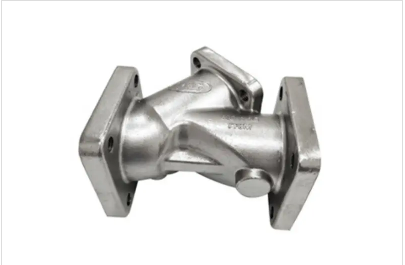Mobile:+86-311-808-126-83
Email:info@ydcastings.com
Innovative Techniques in Super Alloy Casting for Enhanced Material Performance and Durability
Super Alloy Casting A Gateway to Advanced Engineering Solutions
In the world of advanced engineering materials, super alloys stand out as a stellar achievement in material science. Known for their exceptional resistance to extreme temperatures and harsh environments, super alloys have become indispensable in a variety of high-performance applications, particularly in aerospace, automotive, and energy sectors. The casting of these super alloys is a critical process that determines the integrity and performance of the final components.
What Are Super Alloys?
Super alloys, often referred to as high-performance alloys, are primarily designed for use in high-temperature and corrosive environments. They are typically based on nickel, cobalt, or iron and are characterized by their remarkable mechanical strength and resistance to oxidation and thermal creep. These properties make them ideal for applications such as turbine engines, gas turbines, and nuclear reactors, where materials are subjected to extreme stress and varying environmental conditions.
The Casting Process
Casting is one of the most efficient methods of shaping super alloys into complex components. It involves pouring molten metal into a mold, where it cools and solidifies into the desired shape. Super alloy casting requires a precise understanding of the material's properties, as well as meticulous control of temperature and other parameters. The process can be divided into several key steps
1. Mold Design The first step in super alloy casting is the design of the mold. Molds can be made from various materials, including ceramics and metals, and must be designed to withstand high temperatures without deforming. The design also considers aspects such as the cooling rate, which can significantly affect the structure and properties of the solidified alloy.
super alloy casting

2. Melting and Pouring The super alloy is melted in a controlled environment to achieve the desired temperature. This process often takes place in vacuum or inert atmospheres to prevent oxidation. Once the alloy reaches the correct temperature, it is carefully poured into the mold to ensure a uniform fill without imperfections.
3. Solidification As the molten alloy cools, it undergoes a phase transition to solid. The rate of cooling and the thermal gradients within the mold greatly influence the microstructure of the solidified alloy. Proper control during this phase is crucial, as improper cooling can lead to defects such as cracks or voids.
4. Post-Casting Treatment After solidification, components often undergo several finishing processes. These can include heat treatment, machining, and surface finishing, all of which aim to enhance mechanical properties and prepare the component for its intended application.
Applications of Super Alloy Casting
The applications of super alloy casting are extensive. In the aerospace industry, super alloy components are utilized in jet engines, where they must maintain their integrity at temperatures exceeding 1,000 degrees Celsius. The automotive sector benefits from super alloys in high-performance racing engines and turbochargers, where both strength and weight are critical. Additionally, super alloys are used in the power generation industry, especially in gas turbine systems where efficiency and durability are paramount.
Conclusion
Super alloy casting represents a fusion of art and science, where innovative engineering meets the challenges of modern applications. With advancements in casting technologies and materials science, the future of super alloys looks promising. Continued research and development are likely to yield even more robust and efficient materials that can withstand the rigors of their intended environments, paving the way for advancements across various industries. As we continue to push the boundaries of material capabilities, super alloys will undoubtedly remain at the forefront of engineering solutions.
-
Understanding Metal Casting TechniquesNewsApr.02,2025
-
Understanding Exhaust Manifolds for Enhanced Engine PerformanceNewsApr.02,2025
-
The World of Metal FabricationNewsApr.02,2025
-
Key Components for Pump and Turbo EfficiencyNewsApr.02,2025
-
Essential Tools for Automotive Maintenance and RepairNewsApr.02,2025
-
Durable Valve Components for Effective Water ManagementNewsApr.02,2025











